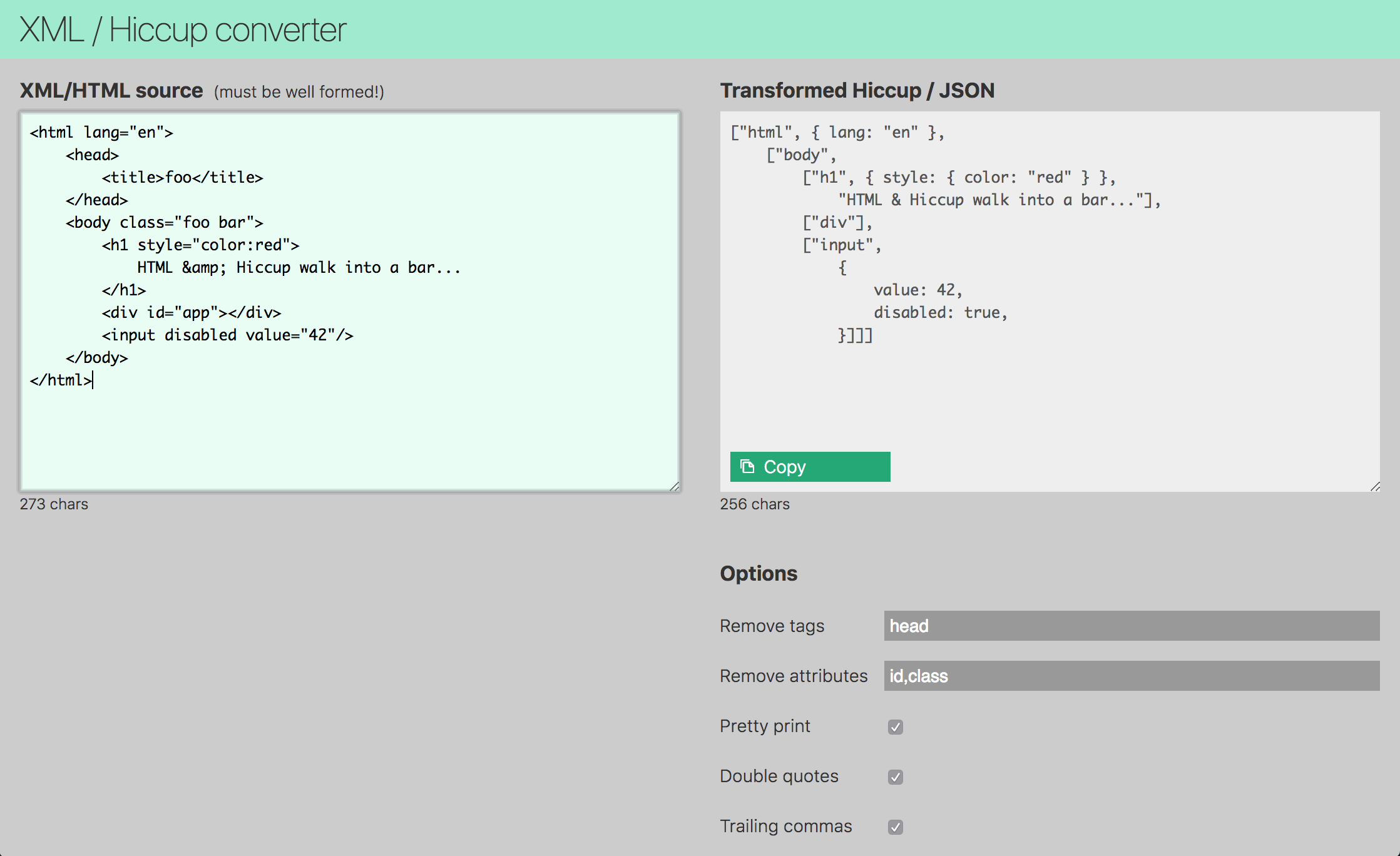
Security News
GitHub Removes Malicious Pull Requests Targeting Open Source Repositories
GitHub removed 27 malicious pull requests attempting to inject harmful code across multiple open source repositories, in another round of low-effort attacks.
@thi.ng/sax
Advanced tools

This is a standalone project, maintained as part of the @thi.ng/umbrella monorepo and anti-framework.
@thi.ng/transducers-based, SAX-like, non-validating, configurable, speedy & tiny XML parser (~1.8KB gzipped).
Unlike the classic event-driven approach of SAX, this parser is implemented as a transducer function, transforming an XML input into a stream of SAX-event-like objects. Being a transducer, the parser can be used in novel ways as part of a larger processing pipeline and can be composed with other pre or post-processing steps, e.g. to filter or transform element / attribute values or only do partial parsing with early termination based on some condition.
Additionally, since by default the parser emits any children as part of "element end" events, it can be used like a tree-walking DOM parser as well (see SVG parsing example further below). The choice is yours!
STABLE - used in production
Search or submit any issues for this package
yarn add @thi.ng/sax
ES module import:
<script type="module" src="https://cdn.skypack.dev/@thi.ng/sax"></script>
For Node.js REPL:
const sax = await import("@thi.ng/sax");
Package sizes (brotli'd, pre-treeshake): ESM: 1.39 KB
Several projects in this repo's /examples directory are using this package:
| Screenshot | Description | Live demo | Source |
|---|---|---|---|
 | SVG path parsing & dynamic resampling | Demo | Source |
 | XML/HTML/SVG to hiccup/JS conversion | Demo | Source |
import * as sax from "@thi.ng/sax";
import * as tx from "@thi.ng/transducers";
src=`<?xml version="1.0" encoding="utf-8"?>
<!DOCTYPE foo bar>
<!-- comment -->
<a>
<b1>
<c x="23" y="42">ccc
<d>dd</d>
</c>
</b1>
<b2 foo="bar" />
</a>`
// sax.parse() returns a transducer
doc = [...tx.iterator(sax.parse(), src)]
// ...or returns iterator if input is given
doc = [...sax.parse(src)]
// (see description of `type` values and parse options further below)
// [ { type: 0,
// tag: 'xml',
// attribs: { version: '1.0', encoding: 'utf-8' } },
// { type: 1, body: 'foo bar' },
// { type: 2, body: ' comment ' },
// { type: 4, tag: 'a', attribs: {} },
// { type: 6, tag: 'a', body: '\n ' },
// { type: 4, tag: 'b1', attribs: {} },
// { type: 6, tag: 'b1', body: '\n ' },
// { type: 4, tag: 'c', attribs: { x: '23', y: '42' } },
// { type: 6, tag: 'c', body: 'ccc\n ' },
// { type: 4, tag: 'd', attribs: {} },
// { type: 6, tag: 'd', body: 'dd' },
// { type: 5, tag: 'd', attribs: {}, children: [], body: 'dd' },
// { type: 5,
// tag: 'c',
// attribs: { x: '23', y: '42' },
// children: [ [Object] ],
// body: 'ccc\n ' },
// { type: 5,
// tag: 'b1',
// attribs: {},
// children: [ [Object] ],
// body: '\n ' },
// { type: 4, tag: 'b2', attribs: { foo: 'bar' } },
// { type: 5, tag: 'b2', attribs: { foo: 'bar' } },
// { type: 5,
// tag: 'a',
// attribs: {},
// children: [ [Object], [Object] ],
// body: '\n ' } ]
As mentioned earlier, the transducer nature of this parser allows for
its easy integration into larger transformation pipelines. The next
example parses an SVG file, then extracts and selectively applies
transformations to only the <circle> elements in the first group
(<g>) element. Btw. The transformed elements can be serialized back
into SVG syntax using
@thi.ng/hiccup...
Given the composed transducer below, parsing stops immediately after the
first <g> element is complete. This is because the matchFirst()
transducer will cause early termination once that element has been
processed.
svg=`
<?xml version="1.0"?>
<svg version="1.1" height="300" width="300" xmlns="http://www.w3.org/2000/svg">
<g fill="yellow">
<circle cx="50.00" cy="150.00" r="50.00" />
<circle cx="250.00" cy="150.00" r="50.00" />
<circle cx="150.00" cy="150.00" fill="rgba(0,255,255,0.25)" r="100.00" stroke="#ff0000" />
<rect x="80" y="80" width="140" height="140" fill="none" stroke="black" />
</g>
<g fill="none" stroke="black">
<circle cx="150.00" cy="150.00" r="50.00" />
<circle cx="150.00" cy="150.00" r="25.00" />
</g>
</svg>`;
[...tx.iterator(
tx.comp(
// transform into parse events (see parser options below)
sax.parse({ children: true }),
// match 1st group end
tx.matchFirst((e) => e.type == sax.Type.ELEM_END && e.tag == "g"),
// extract group's children
tx.mapcat((e) => e.children),
// select circles only
tx.filter((e) => e.tag == "circle"),
// transform attributes
tx.map((e)=> [e.tag, {
...e.attribs,
cx: parseFloat(e.attribs.cx),
cy: parseFloat(e.attribs.cy),
r: parseFloat(e.attribs.r),
}])
),
svg
)]
// [ [ 'circle', { cx: 50, cy: 150, r: 50 } ],
// [ 'circle', { cx: 250, cy: 150, r: 50 } ],
// [ 'circle', { cx: 150, cy: 150, fill: 'rgba(0,255,255,0.25)', r: 100, stroke: '#ff0000' } ] ]
defmultiThis example shows how SVG can be parsed into @thi.ng/hiccup format.
import { defmulti, DEFAULT } from "@thi.ng/defmulti";
// coerces given attribute IDs into numeric values and
// keeps all other attribs
const numericAttribs = (e, ...ids: string[]) =>
ids.reduce(
(acc, id) => (acc[id] = parseFloat(e.attribs[id]), acc),
{ ...e.attribs }
);
// returns iterator of parsed & filtered children of given element
// (iterator is used to avoid extraneous copying at call sites)
const parsedChildren = (e) =>
tx.iterator(
tx.comp(
tx.map(parseElement),
tx.filter((e)=> !!e),
),
e.children
);
// define multiple dispatch function, based on element tag name
const parseElement = defmulti((e) => e.tag);
// tag specific implementations
parseElement.add("circle", (e) =>
[e.tag, numericAttribs(e, "cx", "cy", "r")]);
parseElement.add("rect", (e) =>
[e.tag, numericAttribs(e, "x", "y", "width", "height")]);
parseElement.add("g", (e) =>
[e.tag, e.attribs, ...parsedChildren(e)]);
parseElement.add("svg", (e) =>
[e.tag, numericAttribs(e, "width", "height"), ...parsedChildren(e)]);
// implementation for unhandled elements
parseElement.add(DEFAULT, () => null);
// using the same SVG source as in previous example:
// the `last()` reducer just returns the ultimate value
// which in this case is the SVG root element's ELEM_END parse event
// this also contains all children (by default)
parseElement(tx.transduce(sax.parse(), tx.last(), svg));
// ["svg",
// {
// version: "1.1",
// height: 300,
// width: 300,
// xmlns: "http://www.w3.org/2000/svg"
// },
// ["g",
// { fill: "yellow" },
// ["circle", { cx: 50, cy: 150, r: 50 }],
// ["circle", { cx: 250, cy: 150, r: 50 }],
// ["circle",
// {
// cx: 150,
// cy: 150,
// fill: "rgba(0,255,255,0.25)",
// r: 100,
// stroke: "#ff0000"
// }],
// ["rect",
// {
// x: 80,
// y: 80,
// width: 140,
// height: 140,
// fill: "none",
// stroke: "black"
// }]],
// ["g",
// { fill: "none", stroke: "black" },
// ["circle", { cx: 150, cy: 150, r: 50 }],
// ["circle", { cx: 150, cy: 150, r: 25 }]]]
If the parser encounters a syntax error, an error event value incl. a description and input position will be produced (but no JS error will be thrown) and the entire transducer pipeline stopped.
[...tx.iterator(sax.parse(), `a`)]
// [ { type: 7, body: 'unexpected char: \'a\' @ pos 1' } ]
[...tx.iterator(sax.parse(), `<a><b></c></a>`)]
// [ { type: 4, tag: 'a', attribs: {} },
// { type: 4, tag: 'b', attribs: {} },
// { type: 7, body: 'unmatched tag: c @ pos 7' } ]
The type key in each emitted result object is a TypeScript enum with the following values:
| ID | Enum | Description |
|---|---|---|
| 0 | Type.PROC | Processing instruction incl. attribs |
| 1 | Type.DOCTYPE | Doctype declaration body |
| 2 | Type.COMMENT | Comment body |
| 3 | Type.CDATA | CDATA content |
| 4 | Type.ELEM_START | Element start incl. attributes |
| 5 | Type.ELEM_END | Element end incl. attributes, body & children |
| 6 | Type.ELEM_BODY | Element text body |
| 7 | Type.ERROR | Parse error description |
| Option | Type | Default | Description |
|---|---|---|---|
children | boolean | true | If true, recursively includes children elements in ELEM_END events. For very large documents, this should be disabled to save (or even fit into) memory. |
entities | boolean | false | If true, unescape standard XML entities in body text and attrib values. |
trim | boolean | false | If true, trims element body, comments and CDATA content. If the remaining string is empty, no event will be generated for this value. |
If this project contributes to an academic publication, please cite it as:
@misc{thing-sax,
title = "@thi.ng/sax",
author = "Karsten Schmidt",
note = "https://thi.ng/sax",
year = 2018
}
© 2018 - 2024 Karsten Schmidt // Apache License 2.0
FAQs
Transducer-based, SAX-like, non-validating, speedy & tiny XML parser
The npm package @thi.ng/sax receives a total of 140 weekly downloads. As such, @thi.ng/sax popularity was classified as not popular.
We found that @thi.ng/sax demonstrated a healthy version release cadence and project activity because the last version was released less than a year ago. It has 0 open source maintainers collaborating on the project.
Did you know?

Socket for GitHub automatically highlights issues in each pull request and monitors the health of all your open source dependencies. Discover the contents of your packages and block harmful activity before you install or update your dependencies.

Security News
GitHub removed 27 malicious pull requests attempting to inject harmful code across multiple open source repositories, in another round of low-effort attacks.

Security News
RubyGems.org has added a new "maintainer" role that allows for publishing new versions of gems. This new permission type is aimed at improving security for gem owners and the service overall.

Security News
Node.js will be enforcing stricter semver-major PR policies a month before major releases to enhance stability and ensure reliable release candidates.